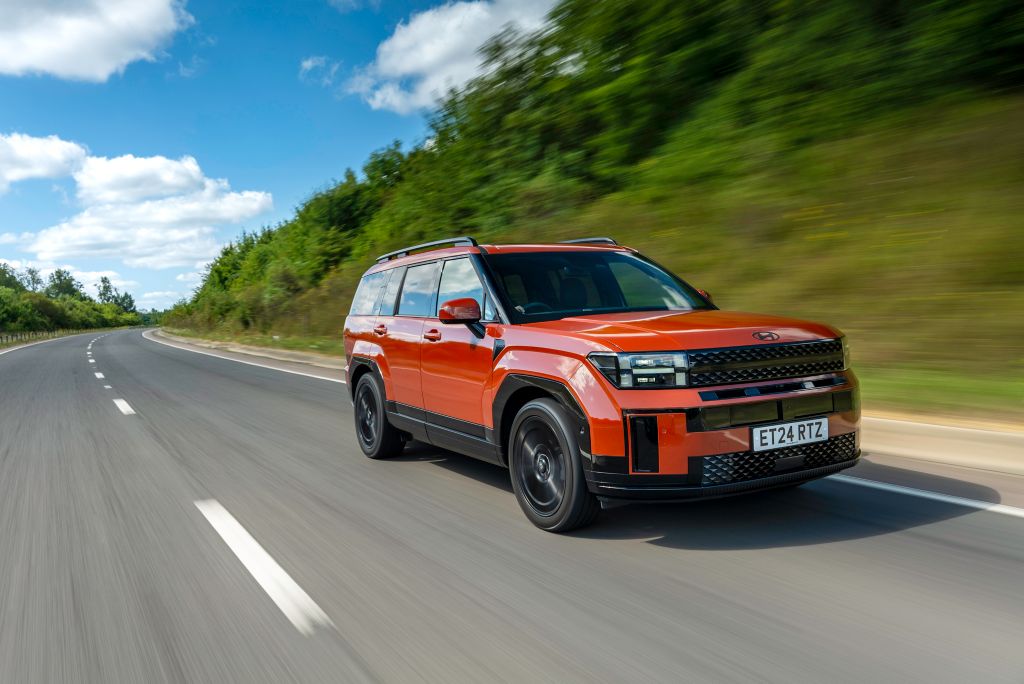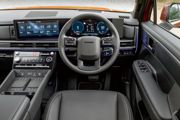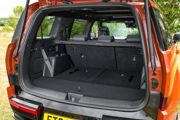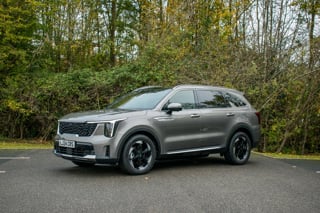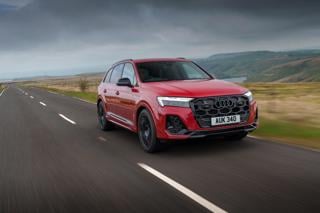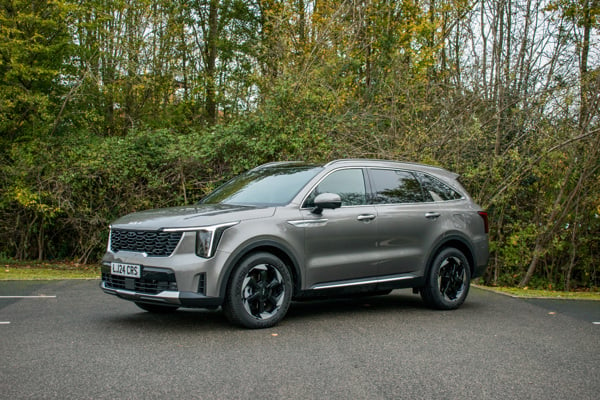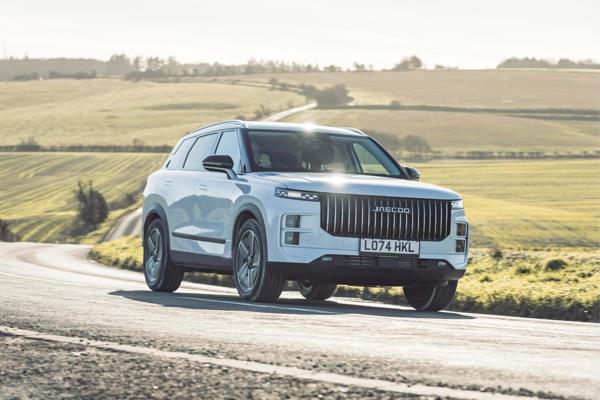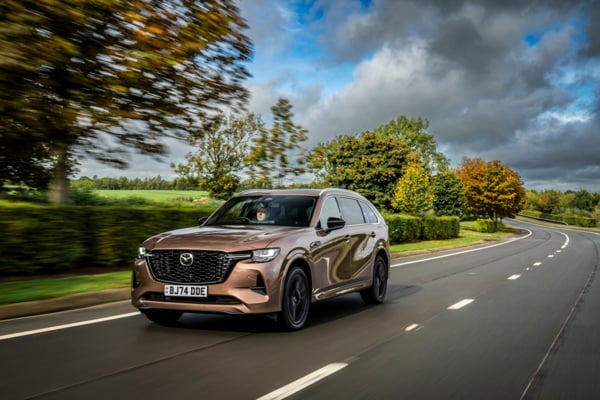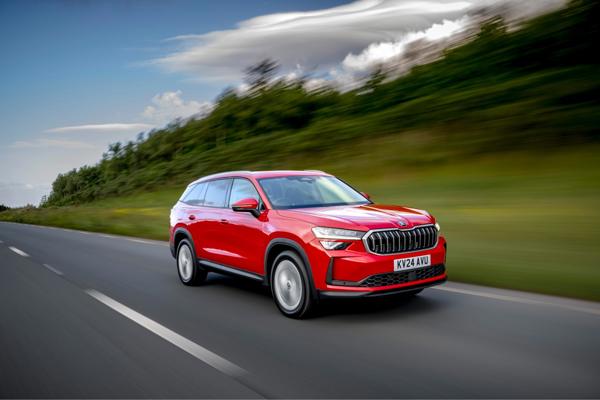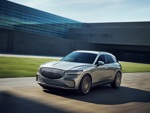Review
The new Santa Fe has taken a step upmarket and looks drastically different to its predecessor, but it remains a practical family car under the skin.
Overview
Hyundai is making a name for itself in the electric car space with its new range of bold-looking, high-tech models.
Through four generations, the Santa Fe has remained relatively nondescript. It was a practical family SUV that flied under the radar. If 100 of them passed you, you’d be none-the-wiser.
For its fifth generation, the Santa Fe has been given the mother of all glow ups. It’s bigger, more eye-catching and more sophisticated.
There’s no missing the Santa Fe now. It stands out pretty much everywhere it goes. The exterior styling channels a utilitarian off-roader, with a modern, futuristic concept car twist.
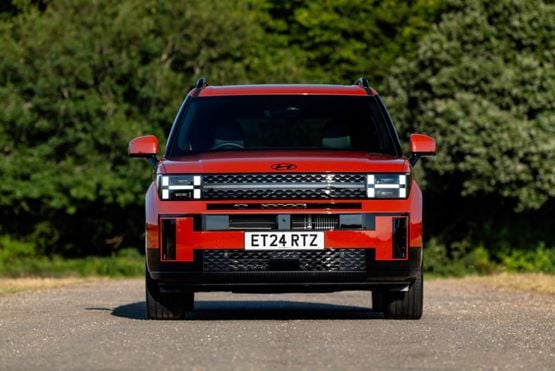
It’s got serious road presence and is now a car that gets you noticed rather than one that isn’t worth noticing.
Powertrain choice is limited to hybrid options, only. Marking a move away from diesel. There’s no electric model, however, as that gap will be filled by the upcoming Ioniq 9.
Stepping up towards the premium segment, the new Santa Fe is priced from £46,996, for the Hybrid, and £51,885 for the plug-in hybrid.
It’s a jump from the car’s natural rivals – the Peugeot 5008, Nissan X-Trail and Skoda Kodiaq – but still cheaper than a BMW X5, Land Rover Discovery or Volvo XC90.
Comfort and Practicality
While the appearance of the Santa Fe has changed drastically, it remains a practical and family-friendly car at its core.
In five seat mode the interior is spacious and there’s a huge boot. Hybrid models have a 628-litre capacity, while the plug-in hybrid manages 621 litres.
If you raise the third row then boot space becomes limited. In fact, Hyundai doesn’t even quote a volume figure for this configuration. You also need to slide the centre row forward to give those in the back some legroom.
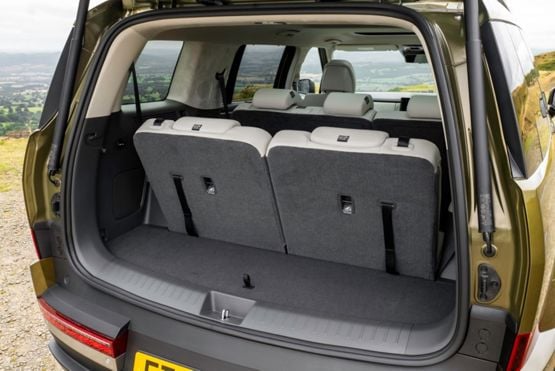
Using the third row also requires the removal of the retractable load cover. While this task is straightforward, there’s no where in the car to store it. The remaining boot space is too narrow for it to sit behind the seats. Fine if you’re setting off from home, but not as ideal if you need to use those extra seats while out and about.
Up front, the Santa Fe provides a commanding driving position with its two seats separated by a wide centre console. There are two phone charging pads in the middle, along with cupholders and an armrest. Notably absent is a gear selector. It’s positioned on the steering column to free up space.
On all models, the front seats are electrically adjustable and heated. There’s also a heated steering wheel, for the driver. Leather upholstery comes as standard and overall material quality feels good.
Safety and technology
It’s refreshing to see that Hyundai has retained plenty of switchgear in the new Santa Fe. The dashboard features physical climate controls and an array of buttons to interact with the infotainment system.
Like the latest Hyundai electric models, the Santa Fe utilises the brand’s new dual-screen digital cockpit. The central 12.3-inch touchscreen handles infotainment functions, while the second display is an instrument cluster.
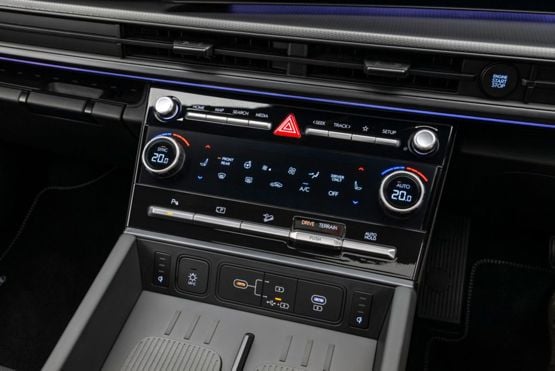
The screens provide impressive graphics but the user interface can be a little complicated. It takes a while to get to grips with the menu structure, which is multi-layered.
There’s a huge suite of driver assistance and safety aids. Many of these, like the surround view camera, blind spot monitor, parking sensors and adaptive cruise control are very useful. Some of the other systems are a little over-sensitive and relay too many warnings to the driver. You can adjust or disable them, but finding out which system is the cause of the particular alarm you wish to stop isn’t always very straightforward.
Drivability and efficiency
In keeping with its external appearance, the Santa Fe feels like a big and bulky car to drive. It’s set up for comfort, with soft suspension providing a smooth ride. As a result, there’s a fair bit of lean when cornering. Light steering helps to simplify manoeuvring in car parks and around town, but the Santa Fe is more at home on larger roads.
The Santa Fe’s hybrid-only line-up is centred around a 1.6-litre turbocharged petrol engine. The Hybrid integrates a small battery and electric motor, developing 215PS. It is available with two- or four-wheel-drive.
CO2 emissions for the Sante Fe Hybrid are quite high. The two-wheel-drive model emits from 155g/km, while the all-wheel-drive emits 165g/km. The powertrain is smooth and quiet, with electric assistance helping to boost overall performance but also to enable silent, electric-only running at low speeds.
The Plug-in Hybrid has greater fleet appeal with far lower emissions. Available with all-wheel-drive only, it features a more powerful electric motor and a 13.9kWh battery pack. This enables electric-only running up to motorway speeds, with a range of around 30 miles on a single charge.
Power is boosted to 265PS, although both models offer similar real-world performance. The Hybrid has a more conventional drive, relying mainly on the engine, while the Plug-in Hybrid can sometimes feel sluggish as it switches between operating modes. In the latter, drive is predominantly provided by the electric motor, with assistance from the engine when full power is needed. To preserve electric range, when in hybrid mode, the petrol engine occasionally runs at idle to charge the battery, while the motor drives the car.
During our time in the Plug-in Hybrid it was averaging a respectable 50mpg. The Hybrid returns closer to 35mpg.
Company car tax and running costs
A high benefit-in-kind rate makes the Santa Fe Hybrid an expensive company car choice. The Plug-in Hybrid makes more sense, attracting a 12% rate.
Of the three trim grades, the entry-level Premium comes packed with equipment and should meet the needs of most drivers. At £51,830, pricing is a fair bit higher than that of a Skoda Kodiaq iV or a Peugeot 5008 PHEV. The Kodiaq also attracts a much lower 5% BiK rate, while the Peugeot sits in the 8% band.
Hyundai has positioned the Santa Fe closer to premium models, therefore its closest competitor is the Mazda CX-80. Both have a running cost of 49p per mile, over a typical four-year cycle.
Compared to models at the top end of the segment, such as the BMW X5 and Volvo XC90, the Santa Fe looks to be good value. While it looks the part, it can’t match those models for driveability.
Specs
| Manufacturer | Hyundai |
| Model | Santa Fe Estate |
| Specification | Hyundai Santa Fe Estate 1.6 TGDi Plug-in Hybrid Premium 5dr 4WD Auto |
| Model Year | 2024.00 |
| Annual VED (Road tax) | £110 |
| BIK List Price | £51,830 |
| Range | 34.00mile(s) |
| CO2 | 38g/km |
| BIK Percentage | 12% |
| Insurance Group | N/A |
| CC | 1,598 |
| Fuel Type | Petrol Parallel PHEV |
| Vehicle Type | Large SUV |
| Luggage capacity (Seats up) | 621litres |
| Doors | 5 |
Running Costs
| P11D | £51,830 |
| Cost per mile | 53.07ppm |
| Residual value | £25,725 |
| Insurance group | N/A |
| Fuel Type | Petrol Parallel PHEV |
| Cost per mile | 133.68ppm |
| Fuel | 4.02ppm |
| Depreciation | 127.05ppm |
| Service maintenance and repair | 2.61ppm |
Rivals
Info at a glance
-
P11D Price
£51,830
-
MPG
166.0 (WLTP) -
CO2 Emissions
38g/km -
BIK %
12% -
Running cost
3 Year 60k : £25,725 4 Year 80k : £20,950 -
Fuel Type
Petrol Parallel PHEV -
Range
34.00mile(s)



